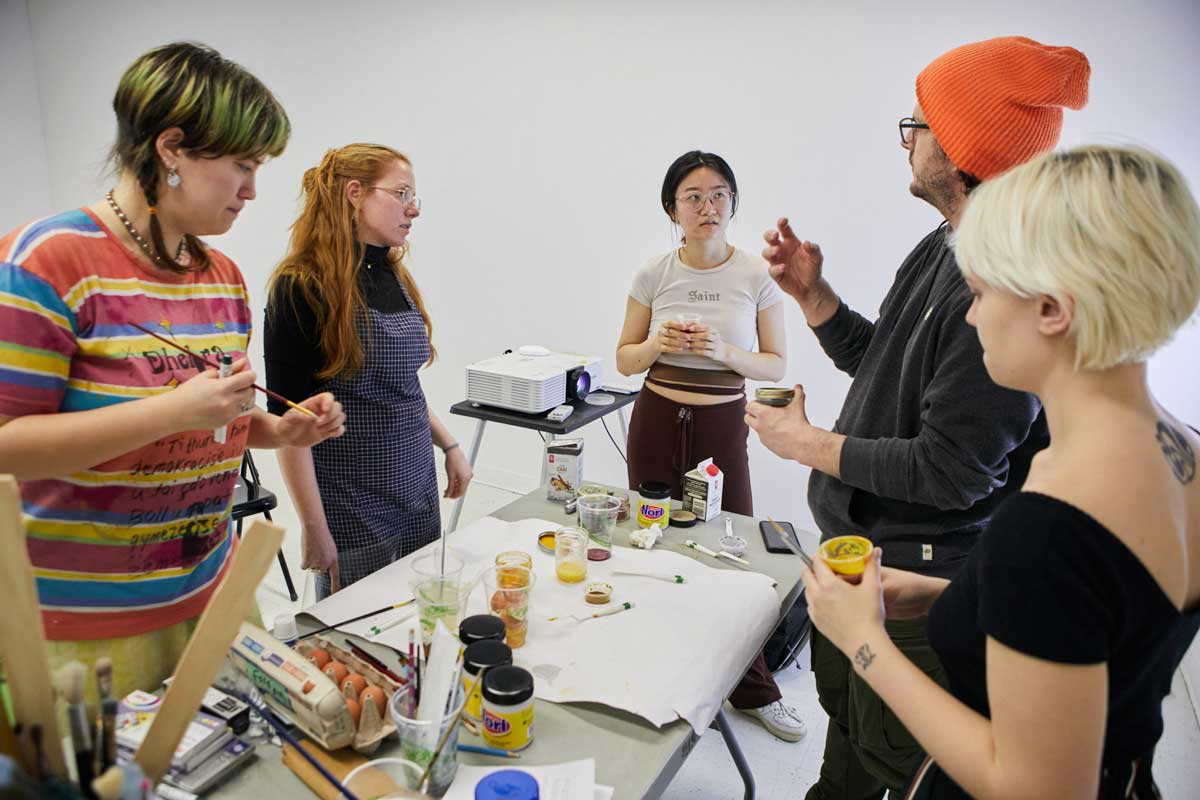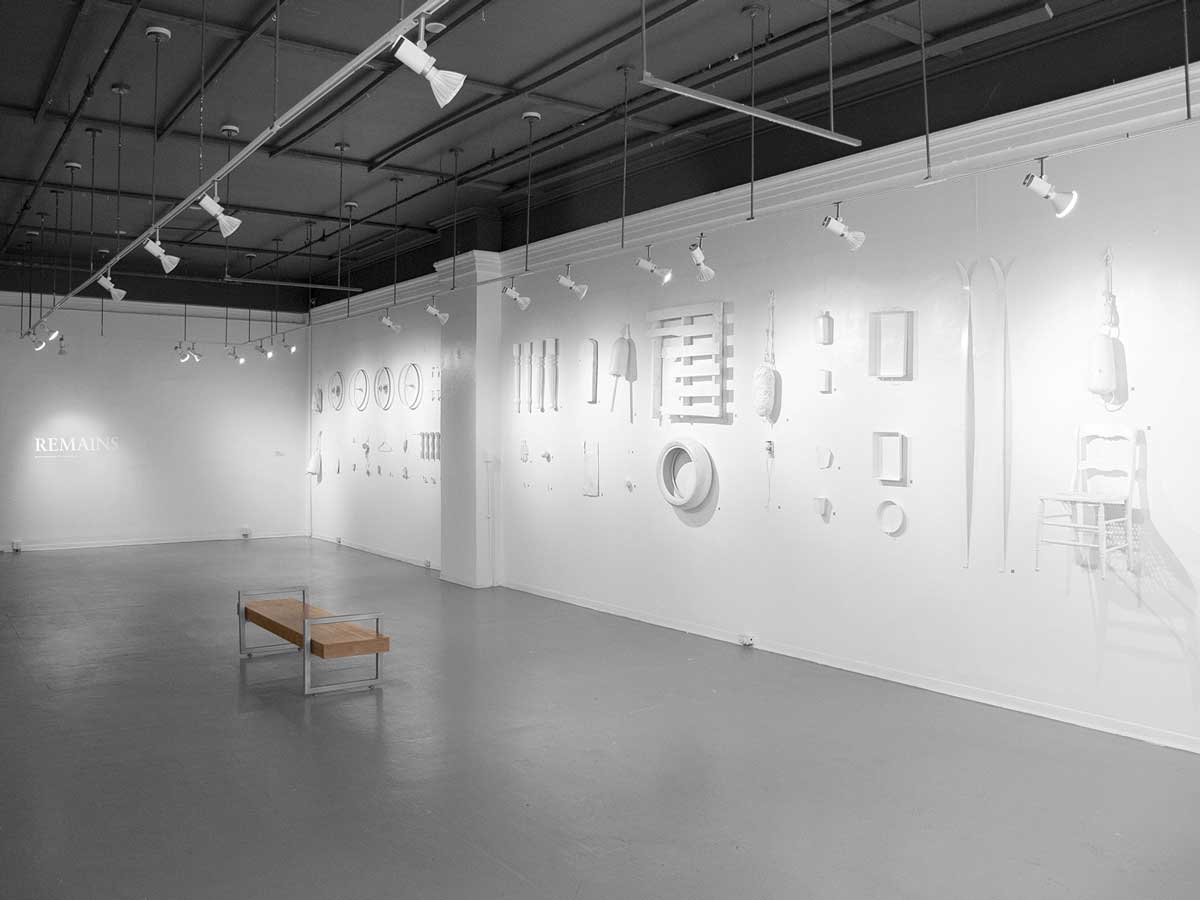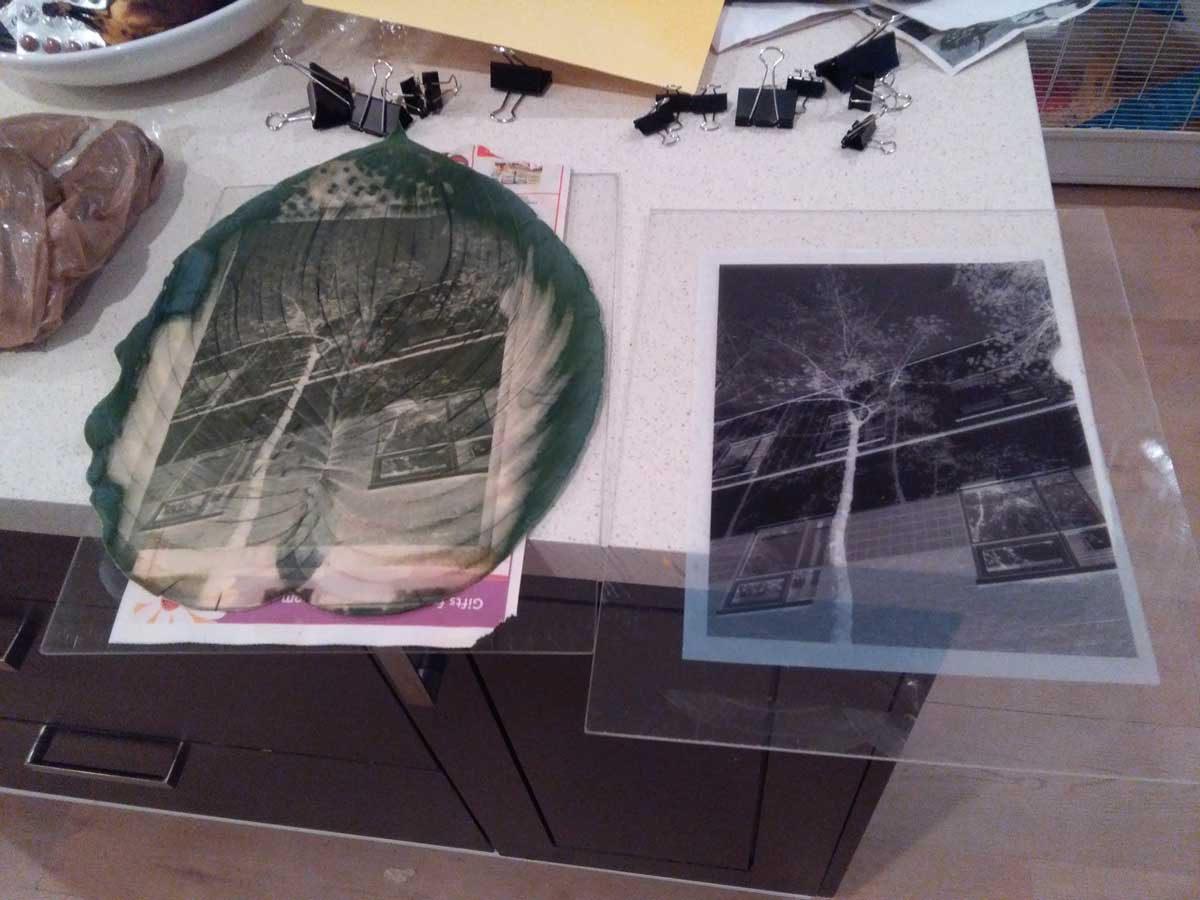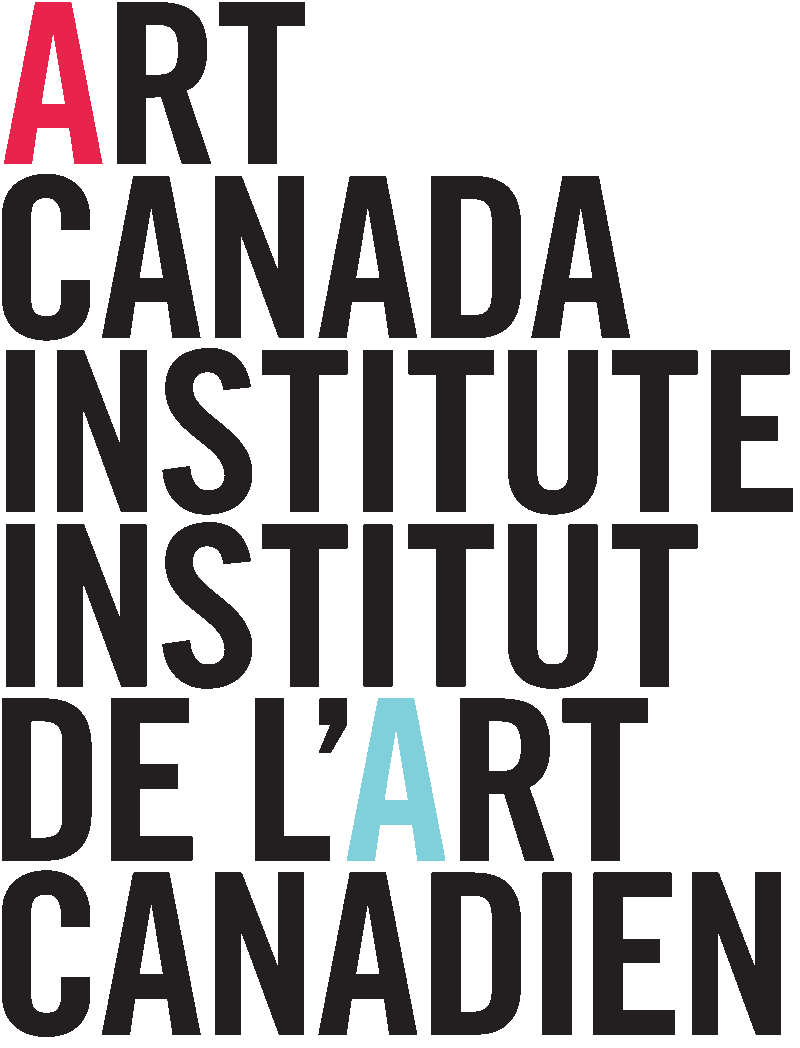F.5 Thinking Environmentally in Practice: Sustainability and Studio Pedagogy
Sat Oct 21 / 10:15 – 11:45 / KC 205
chairs /
- Amanda White, Western University
- Robert Hengeveld, Memorial University of Newfoundland
Marked by our time of global environmental crisis, students in studio art disciplines are increasingly focused on themes of ecological degradation and the toxicity of the world around them. Meanwhile, studio pedagogy is increasingly focused on non-toxic and alternative methods and materials (expedited by remote instruction during the pandemic). In this roundtable format, we will share resources, ideas and experiences around topics such as pedagogical tools, processes, challenges and successes in developing, refining or improving sustainable materials and practices. We invite artists, teachers, scholars and students who are interested in asking; how can instructors provide essential learning for the next generation of students, while also helping to achieve a lower carbon footprint and a less toxic classroom environment? What kinds of studio tools and processes must we re-visit, re-evaluate or re-invent toward our changing environmental reality? How might teaching in the studio contribute to a sustainable future in the arts?
keywords: environment, pedagogy, studio, materials
session type: roundtable
Amanda White (she/her) is a white settler artist/scholar living and working in Tkaronto/Toronto. Amanda is a SSHRC Postdoctoral Fellow at the Centre for Sustainable Curating in the Department of Visual Art at Western University and a Co-initiator of the Creative Food Research Collaboratory. Her current work is focused on plants and food.
Robert Hengeveld (he/him) lives and works in Elmastukwek, Ktaqmkuk (Corner Brook Newfoundland). He is an artist, teacher, and backyard chicken farmer. His creative work has been shared across Canada and internationally. A current focus is on the reshaping of creative practice amidst a deepening climate crisis.

Jasmine Sihra & Nicole Burisch, Laurence Poirier via FOFA Gallery, ESA Workshop 2 Participants Discussing, March 2023
Exploring Sustainability Across the Arts: Supporting Students and Artists at the FOFA Gallery
- Jasmine Sihra & Nicole Burisch, Concordia University
Based at Concordia University, the Faculty of Fine Arts (FOFA) Gallery supports emerging and professional artists, students completing fine arts degrees, alumni, faculty, and other staff at the university. Our recent initiative Exploring Sustainability Across the Arts (ESA) invites collaborators from various departments and skill levels to model new sustainable exhibition strategies that can influence future generations of artists and cultural workers. Inspired by the Centre for Sustainable Curating at Western University’s Using the Resources at Hand: Sustainable Exhibition Design guide, the FOFA Gallery recently implemented a “no-PVC vinyl lettering" mandate, inviting staff, exhibiting artists and students to experiment with new signage techniques, designs and materials. Some of these techniques include tracing, stenciling, nori/wheat pasting, sign painting, and other material experimentations. We have also connected with other organizations with similar sustainability goals to share resources through workshops and panels. Like many small galleries, the FOFA typically works with minimal resources on tight timelines, and this project seeks ways to move away from this scarcity mentality towards a model where we might approach our work with intention, slowness, consideration and care.
Jasmine Sihra, the Curator of Sustainability and Engagement, and Nicole Burisch, FOFA Gallery Director will present findings from the last 8 months of our sustainability work. Sihra will share her own PhD research that considers decolonizing methodologies, Indigenous feminisms and sustainability in the arts as it relates to her work at the gallery, while Burisch will discuss the logistics of the project and focus on the gallery as a site for hands-on community-based learning outside of traditional classroom settings.
keywords: community-building, sustainable signage, workshopping, student-oriented, university art gallery
Jasmine Sihra is a Punjabi settler scholar originally from Tkaronto/Toronto, currently based in Tiohtià:ke/Mooniyang/Montreal. In 2020, she completed her Honours Bachelor of Arts in Art History and Museum Studies at Western University. She completed her master's in art history at Concordia University, writing a thesis titled Melting Glaciers and Rising Seas: Indigenous Digital Art in the Arctic and Pacific Islands. Jasmine is a PhD student in the Department of Art History at Concordia University, where she works from Indigenous feminisms and decolonizing methodologies to research sustainable curating and artistic practices, climate change, and solidarity-building. She is currently the Curator of Sustainability and Engagement at the FOFA Gallery at Concordia University.
Nicole Burisch is a curator, critic, and cultural worker. She is a settler of German/Scottish/Irish/English descent, born and raised in Treaty 6 territory (Edmonton) and currently living and working in Tio'tia:ke/Mooniyaang (Montreal). Her work focuses on discourses of craft, feminism, performance, collaboration, labour, and materiality within contemporary art. Burisch has held positions and presented projects with organizations such as the National Gallery of Canada, Optica, the Museum of Fine Arts, Houston, She Works Flexible, Mentoring Artists for Women's Art, Artexte, Walter Phillips Gallery, Centre des arts actuels Skol, and the Mountain Standard Time Performative Art Festival. Her research into curatorial strategies for politically engaged craft practices is included in milestone publications The Craft Reader (Berg) and Extra/ordinary: Craft and Contemporary Art (Duke University Press) and she co-edited The New Politics of the Handmade: Craft, Art, and Design (Berg). She is currently the Director of the FOFA Gallery at Concordia University.

Marie-Soleil Provençal, Remains, domestic waste, 2021
Sculpture and Sustainability: material awareness in the studio
- Marie-Soleil Provençal
I learned sculpture the same ways as my mentors and the sculptors before them, with a combination of toxic materials and methods similar to most programs in Canada. In response to our environmental reality, it is necessary to re-think how we make and teach sculpture. As art instructors, we must build programs based on local resources. We need to educate students to be responsible for what they create (to consider the environmental impact of working with this material or that method). Finally, we have to provide support for them to make informed decisions.
My studio experimentations as a sculptor include conventional and new materials combined with traditional techniques and new technologies. For example, a paste of discarded oyster shells from Maritimes restaurants cast in tiles; a reusable flexible bioplastic made with animal leftovers from the neighbourhood butcher used like a rubber mould; a binder made of apple waste from cider producers to replace toxic glue in compressed fiberboard. My references combined scientific journals, indigenous wisdom, old cooking recipes, previous plastic methods, DIY, and open-source databases. For the past two years, I shared this knowledge with sculpture students. In this roundtable, I will discuss how I integrate this into my teaching.
keywords: environment, pedagogy, studio, materials, sculpture
Marie-Soleil Provençal (she/her) is a French Canadian activist sculptor from the South-East of Québec, Canada. “Home” is the Appalachian Mountains between the city of Montréal and the region of New England, United States. She completed a MFA in Nova Scotia and multiple complementary formations in crafts and design on both sides of the Canada-US border. For the past few years, she has been an artist, a research assistant, a technician, and an instructor in Visual Arts from Québec to Newfoundland. Her work addresses our relationships with our surroundings, an ecosystem of humans and non-humans. As a material-based sculptor, she integrates mundane materials like concrete structures, natural elements, and discarded objects, into sculptures and site-specific installations, many being bio-degradable or ephemeral. Inspired by popular science and visual communication, she uses moulding, assembling and stencilling to render complex ideas in their simplest form.

Chlorophyl print by student Anna Polkovnichenko created as part of the class Alternative Processes & Installation at KPU, Summer 2023.
Teaching the Sustainable Darkroom
- Jessica Gnyp, Kwantlen Polytechnic University
I currently teach photography a Kwantlen Polytechnic University both digital, analogue and alternative processes and my research includes looking at sustainable practices that are non-toxic or of lower toxicity including alternatives to film and photographic paper developers, alternatives to photo paper, and the environmental and social impact of digital production. The materials used in digital processes are derived from geopolitical networks, which media theorist Jussi Parrika elaborates on in his book titled A Slow, Contemporary Violence: Damaged Environments of Technological Culture, and involve extractive industries such as mining rare minerals and metallic earths.
Through teaching I have been exploring with my students techniques including chlorophyll prints, cyanotypes and anthotypes all which date back to early photographic history. In chlorophyll printing leafy plants and grasses are used as a light sensitive surface whereas in anthotype printing a variety of plant-based emulsions including spices such as chili peppers, turmeric and vegetables like spinach and beets are used. These plant-based emulsions are discussed in the economic and colonial contexts to which they have become available.
As my students work through these processes, they simultaneously learn about the history of photography, economics and see how conventional practices can be adapted to become more sustainable. These processes cannot directly replace digital and analogue technologies primarily due to their ephemeral nature, they fade over time, or in the case of the cyanotype they lack the colour range of contemporary digital photography. I have been asking my students questions as follow: How can these techniques be reimagined into new technologies that are local and sustainable? How can these alternatives, often historical, enter dialogue with contemporary art?
keywords: sustainable darkroom, photography, alternative processes, economics of materials and technologies
In installations that fuse stuff such as rolls of photo-backdrop paper, salt, seaweed, ink, plastic, and museum mounts, Jessica Gnyp articulates a connection between the so-called natural and the synthetic, highlighting the interaction between photographic practice and the environment. Materially and conceptually aware, her work articulates likenesses between material formation in nature and technological processes that we employ in daily life. She received an MFA from the Department of Art History, Visual Art and Theory at the University of British Columbia a BFA in photography from Emily Carr University and a BA in anthropology from the University of Victoria. She recently completed residencies at Zentrum für Kunst und Urbanistik, Berlin and Salzburg International Summer Academy, Austria. She has received Canada Council for the Arts and BC Arts Council awards as well as the Social Sciences and Humanities Research Council (SSHRC), Graduate Scholarship. She has taught as Visiting Assistant Professor at Memorial University of Newfoundland and currently teaches photography at Kwantlen Polytechnic University, Surrey BC.
